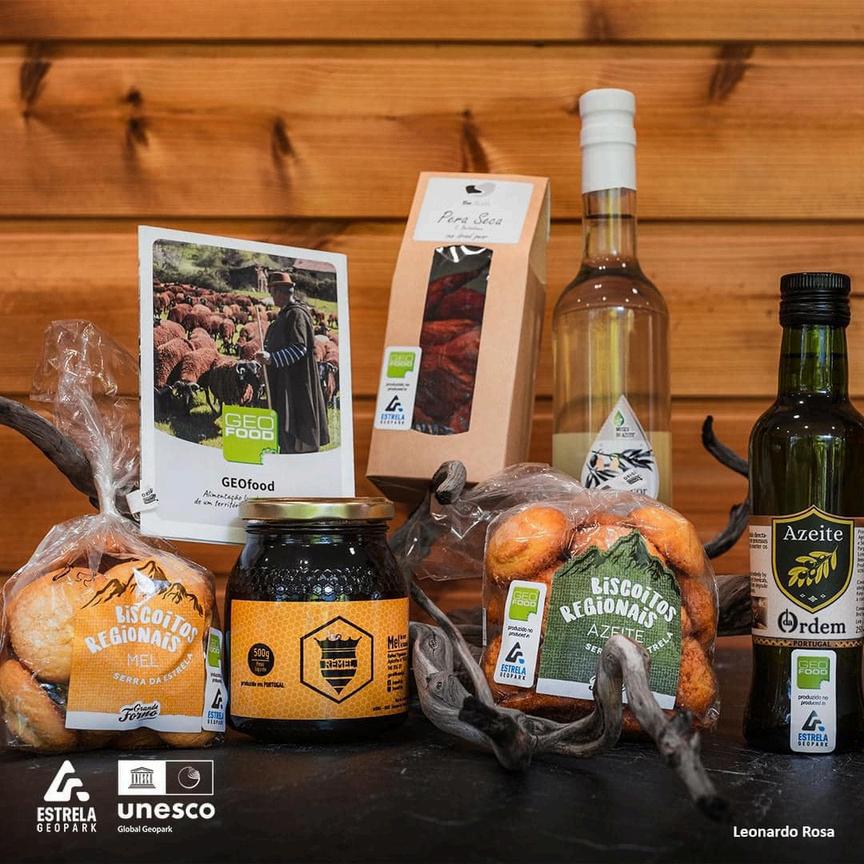GEOFOOD DELIGHTS

Authentic Recipes from UNESCO Global Geopark
Communities



Authentic Recipes from UNESCO Global Geopark
Communities


IN THIS NUMBER:
Lauhanvuori – Hämeenkangas Geopark, Finland
Burren and Cliff of Moher Geopark, Ireland
Tuscan Mining Geopark, Italy
Naturtejo Geopark, Portugal
Vis Archipelago, Croatia
Vestjylland Geopark, Denmark
Terras de Cavaleiros Geopark, Portugal
Saimaa Geopark, Finland
Sesia Val Grande Geopark, Italy
Rocca di Cerere Geopark, Italy
Azores Geopark, Portugal
Thuringia Geopark, Germany
Novohrad-Nógrád Geopark, Hungary/Slovakia
Estrela Geopark, Portugal


GEOfood is a mouthwatering revolution that serves up a delightful dish of local cuisine, geology and cultural heritage, all on one plate! Picture this: every bite not only tickles your taste buds but also whispers the tales of the land it comes from. GEOfood is here to throw a flavorful fiesta, showcasing how Mother Nature’s geological quirks spice up local ingredients and traditional recipes.
At the core of GEOfood is the mission to whip up and share local recipes that are more than just food—they're love letters to community and heritage! When locals dish out their cherished recipes, it’s like unlocking a treasure chest of wisdom about the land’s goodies and history. Each plate becomes a delicious story, inviting you to dive into the essence of a place through its scrumptious offerings.
So whether you’re slurping up a hearty stew made from local treasures or nibbling on a sweet treat inspired by home-grown flora, GEOfood is your ticket to a taste adventure! Dive into the flavors, savor the stories, and let your taste buds explore the geology right on your plate!
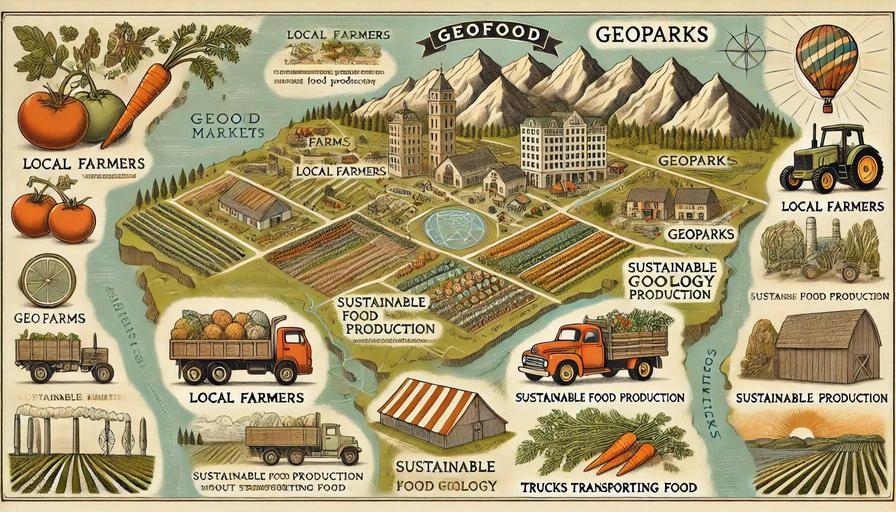
Dear Readers,
As the editor of GEOfood Delights, I am thrilled to welcome you to our vibrant culinary geological journey!
Here, we celebrate the rich tapestry of flavors from around the globe, bringing you recipes that not only tantalize your taste buds but also tell the stories of the cultures they originate from.
In each issue, you’ll discover a diverse array of dishes, from the crystal clear water of Finnish lakes to the rustic comforts of Italian kitchens, based on the peculiar knowledge of the Geoparks participating in the GEOfood brand.
Our mission is to inspire you to explore new ingredients, techniques, and traditions, all while enjoying the process of cooking
Whether you’re a seasoned chef or just starting your culinary adventure, we invite you to dive in, experiment, and share your own GEOfood experiences with us.
Let’s embark on this delicious journey together!
Happy cooking!

Dr. Sara Gentilini Editor in chief.
Special thanks to:
Mr. Long Tran, Assistant Editor.
Mr. Pål Thjømøe, Assistant Editor.

“The dish embodies our culinary tradition, where respect for nature and simplicity are at the heart of every meal. Using minimal, highquality ingredients sourced directly from our region’s pristine lakes, fields and forests, the recipe reflects our approach of allowing natural flavors to shine through.”


300g pikeperch filet
1 large shallot
2 tbsp churned butter
1 tbsp flour
2 dl local dry white wine
3 dl heavy cream
1 tbsp fresh tarragon or chives
1 tbsp lemon juice
butter for frying salt to taste
1 Start by dicing the shallot, grown in the fertile fields of our region Slowly cook the shallot in churned butter with flours if you want – the traditional butter is made from the milk of cows in local farms, representing the strong agricultural heritage
2. Cooking the sauce: Add the white wine, sourced from nearby vineyard, and cook together with shallots for about 5-10 minutes. The wine will bring fresh hints of local flavors to the dish.
3 Adding the cream and herbs: Pour in the heavy cream In line with Finland’s culinary tradition of slow cooking and simplicity, let the sauce simmer gently until it thickens Sauté the shallots, then add lemon juice and fresh herbs such as tarragon or chives The use of fresh, self-grown herbs reflects the Finnish approach of making the most of nature The herbs will connect the sauce to our agricultural landscapes and diverse vegetation within our region
4. Preparation of the fish: The mostly barren lakes and valuable rivers of our region are habitats for many significant natural fish species. The pikeperch is caught using traditional methods to respect the sustainable fishing culture of the area. Season the fillets with a pinch of salt.
5 Cooking the fish: Start by browning plenty of butter in a pan and fry the filets over medium heat Allow the skin to crisp while keeping the inside moist: this enhances the fish’s natural flavor and highlights the purity and richness, connecting the dish to our land and water
6 Finishing touches: Pour the sauce onto the plate and place the fried pikeperch filets on top Finish the dish with fresh herbs and edible flowers, which flourish in the meadows and gardens of our region. The flowers bring beauty to the dish but also celebrate the local biodiversity.

LINNANE'S LOBSTER BAR: A TASTE OF THE BURREN’S UNIQUE GEOLOGY AND CULTURE

Oysters have been a part of Ireland’s culinary and cultural heritage for centuries They were once so plentiful they were sold by street vendors in cities and were a common and affordable food However, by the late 20th century, as wild oyster populations declined, oysters transformed from a humble staple into a prized delicacy, celebrated for their rich flavor and deep connection to Ireland's natural landscape.
In the Burren and Cliffs of Moher UNESCO Global Geopark, local fishermen harvest Flaggy Shore oysters and "dainties" from Grade A waters, considered to be the cleanest water available. What makes Linnane's Lobster Bar truly extraordinary is their intimate connection to the Burren's geology.
The limestone hills that form the iconic landscape of the Burren are not just scenic backdrops; they play a crucial role in shaping the flavor and texture of these oysters As the Burren has little surface water, most rain water flows through underground rivers and caves before reaching the sea It is these hidden freshwater streams that carry essential nutrients and carbonate from the ancient limestone, nourishing the oysters and giving them a distinct taste
Once harvested, these fresh oysters are served at nearby Linnane’s Restaurant in New Quay and at the Flaggy Shore Oyster Experience next door. Owners Conor Graham and Mark Cummins serve the shellfish lightly cooked or raw to allow the natural flavor of the sea to permeate.
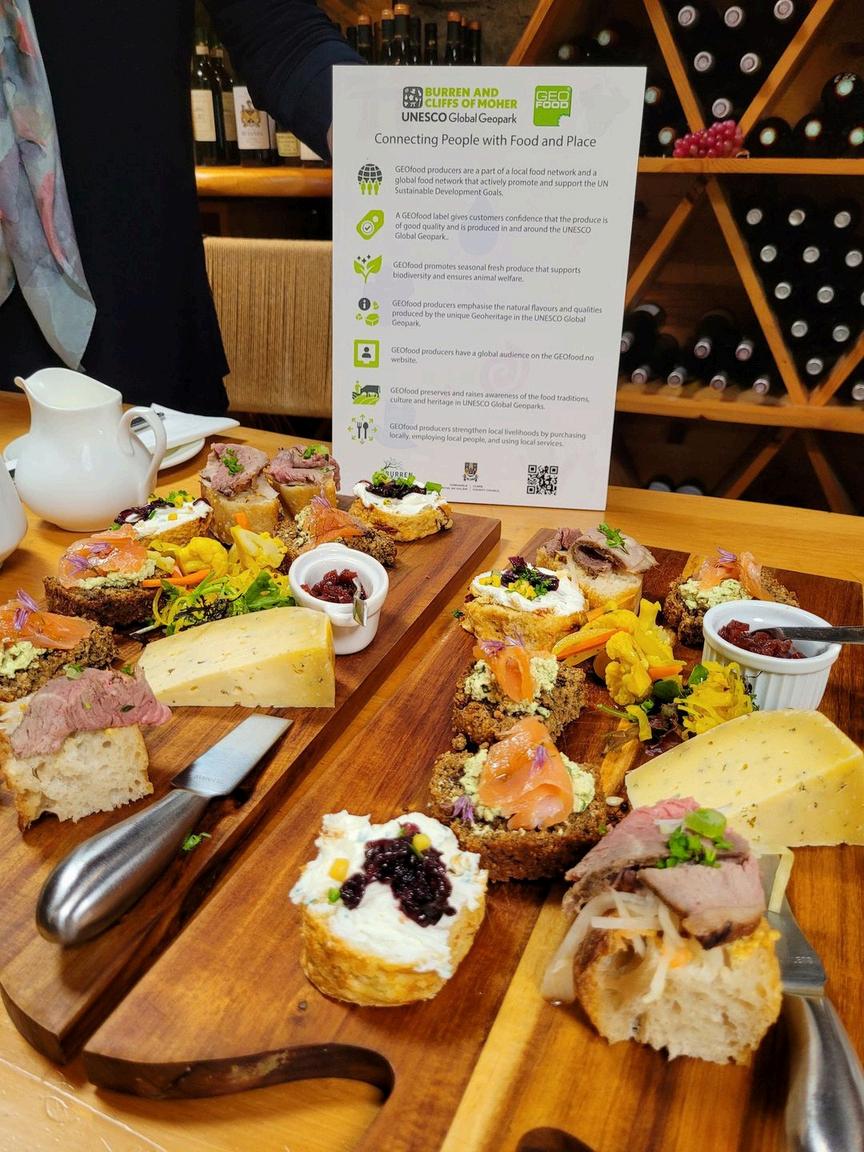

6 oysters
250g of salted butter, softened
4 cloves of fresh garlic
100g flat leaf parsley
INSTRUCTIONS:
1 Pick the parsley leaf from the stalks and blend with the garlic cloves and softened butter until the butter is nice and green
2 Shuck (or open) your oysters and drain off the juice
3 Scrunch up tinfoil onto a tray that is suitable for grilling The tinfoil holds the oyster up right, avoiding the garlic butter from spilling out
4 Use a teaspoon, to spoon the soft garlic butter on to each oyster
5 Grill until the butter starts to foam
6 Then dust evenly with the breadcrumbs and grill once more until golden
7 Serve with a wedge of lemon and some chopped herbs like chives, dill or parsley
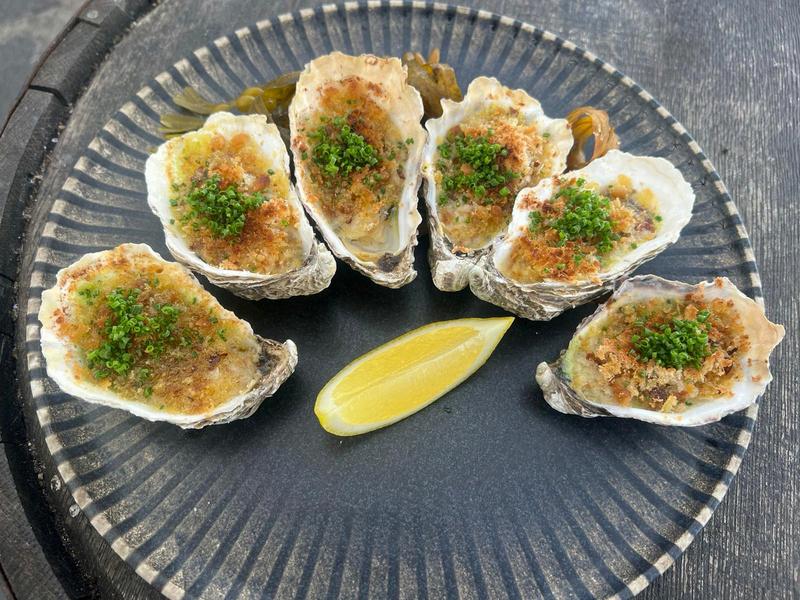

INGREDIENTS:
6 Giga Oysters
200g Buttermilk
Elderflower vinegar to taste
Chive oil to garnish
INSTRUCTIONS:
1 Start by blending 200g of roughly cut chives with 175ml of vegetable or neutral oil until the blender becomes hot and the oil is vibrant green
2 Pass the hot chive oil through a clean tea towel into a bowl chilled on ice, set aside
3 Choose a good quality buttermilk, and give it a shake to mix
4 Mix some elderflower vinegar into the buttermilk and taste It should have a clear note of elderflower with a slight extra acidity
5 Shuck (or open) two Gigas oysters and drain off all the excess liquid
6 Serve - Dress the oysters with the buttermilk mix and drizzle the chive oil on top
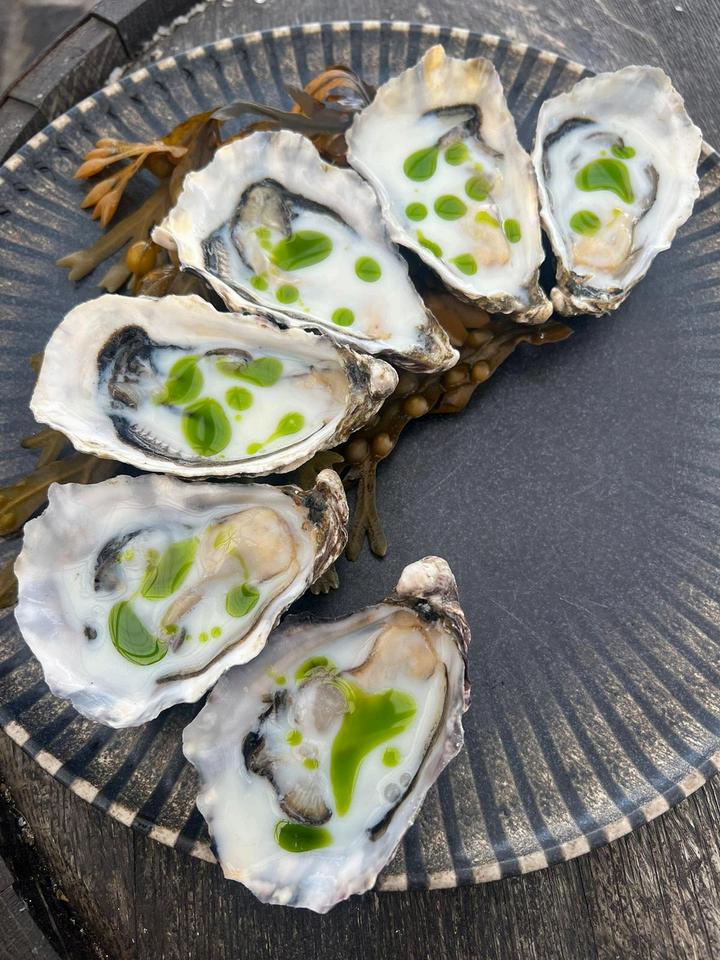

Acquacotta is a traditional Tuscan soup that translates to “cooked water.” Its origins date back to the Middle Ages, particularly in the coastal region of Maremma. Originally a peasant dish, it was a staple for local cattle breeders and charcoal burners, made from simple ingredients like stale bread, water, onions, tomatoes, and whatever vegetables were available.
Cultural Significance
Peasant Roots: Acquacotta reflects the resourcefulness of rural communities, utilizing leftover ingredients to create a nourishing meal
Variations: While the basic recipe remains simple, modern versions often include fresh ingredients like eggs and cheese, showcasing regional adaptations
Comfort Food: This soup is cherished for its warmth and heartiness, making it a popular choice during colder months.
Acquacotta embodies the essence of Tuscan culinary traditions, emphasizing simplicity and the use of local produce Have you ever tried making it or tasted it somewhere?


INGREDIENTS:
Yellow onions 1 5 lbs (700 g)
·Celery 7 oz (200 g)
Peeled tomatoes 1 8 lbs (800 g)
·Extra virgin olive oil ½ cup (120 g)
Water 1 6 cups (200 g)
·Vegetable broth 2 cups (500 g)
Fine salt to taste
·Basil to taste
Eggs 4
For plating
(old) Tuscan bread 4 slices - stale
·Pecorino cheese 3 ½ tbsp (50 g)
Extra virgin olive oil to taste
·Basil to taste
1. To prepare the aquacotta, first prepare the vegetable broth and keep it warm
2. Start by peeling the onions, then cut them in halves and slice them thinly.
3. Cut the celery. First wash it well, then cut the celery stalks and leaves into fairly thin slices.
4. Pour the olive oil into a pan, put on the fire and add onions and celery.
5 Add, little by little, water and salt
6. Mix with a wooden ladle and cook until the water has completely evaporated.
7. Then add the peeled tomatoes and crush them gently with the ladle.
8. Mix everything, add the hot vegetable broth, stir again and cook for about 40 minutes, possibly covering with a lid and stirring occasionally.
9 When the oil has surfaced, add some basil leaves and the eggs by breaking them directly into the pan. Arrange them distanced from each other. Add salt and cover with a lid
10. Leave the eggs to cook for about 4-5 minutes (or less depending on the taste you prefer).
11 Meanwhile, crumble a thin slice of stale Tuscan bread in each cocotte bowl You can crumble it with your hands and arrange it to line the bottom.
12 Add grated pecorino cheese on top and add the soup with the ladle, making sure to take one egg for each cocotte/portion).
13. Garnish with a drizzle of extra virgin olive oil, a basil leaf and serve it hot (but also cold is very good in the summer).

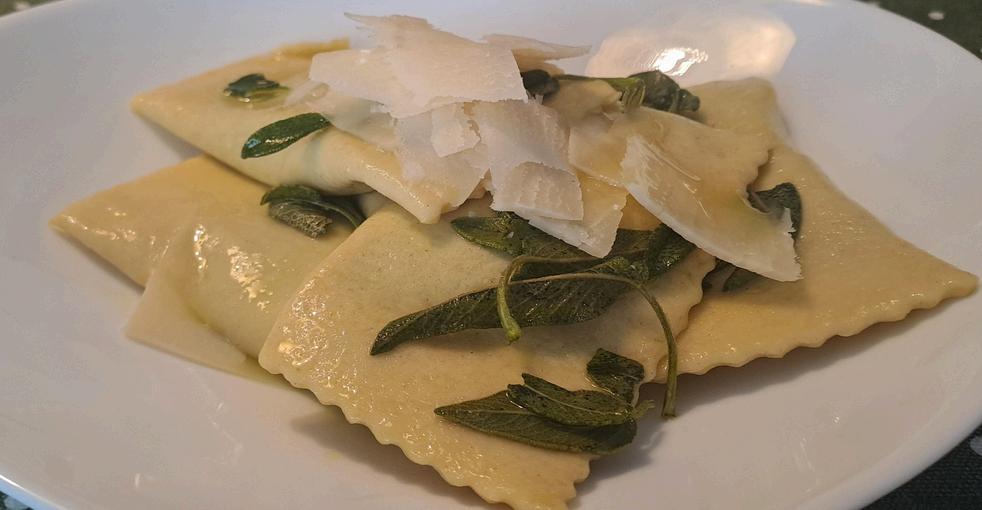
Tortelli Maremmani is a traditional dish from the Maremma region of Tuscany, known for its rich history and cultural significance
Tortelli Maremmani emerged from the “cucina povera” (poor kitchen) tradition, reflecting the resourcefulness of rural communities. The dish was created using simple, locally available ingredients, often as a way to make hearty meals from what was on hand
The Maremma region, characterized by its rugged landscapes and agricultural roots, has a culinary history tied to livestock farming and the use of fresh ricotta, which is a primary filling for the tortelli.
Larger Ravioli: Tortelli are larger than typical ravioli, with a higher pasta-to-filling ratio. They are traditionally filled with ricotta, wild greens, and sometimes flavored with nutmeg
This dish is often associated with family gatherings and celebrations, making it a beloved staple in Tuscan homes: many families have their own recipes passed down through generations, emphasizing the dish’s role in local culture
It’s a dish that embodies the spirit of Maremma and the Geopark connecting people to their heritage through food.

INGREDIENTS :
Egg pasta made with 3 eggs
200-220 g of mixed fresh ricotta
150 g of chard (original recipe) or spinach
Boiled and well-drained
1 egg (optional)
2 tablespoons of Parmesan cheese
Salt (to taste)
Pepper (to taste)
Nutmeg (if desired)
Preparation of Homemade Pasta:
1.Fresh egg pasta: The amount depends on how much pasta you need. Generally, one egg yields about 100 g of dough For tagliatelle, use about one egg per person; for stuffed pasta (Tortelli), one egg for every two people
INGREDIENTS:
3 eggs
300 g of flour
A pinch of salt
Start by making a well with the flour, crack the eggs into it, and add the salt a Mix the eggs with the flour using a fork, trying not to let them spill out of the well
b
c
d
Once the dough is dense enough, start kneading with your hands, gathering all the flour from the board Knead for about 10 minutes until the dough is smooth and compact
Let the fresh egg pasta rest for at least an hour before using it, covered with a slightly damp cloth After an hour, the handmade pasta is ready to be shaped
INSTRUCTIONS:
Prepare the pasta dough and let it rest for at least an hour, covered with a slightly damp cloth
2
1 Meanwhile, prepare the filling for the tortelli: mix the ricotta with a fork, ensuring it’s well-drained (if it seems watery, let it drain well), add the well-drained and chopped chard (or spinach), the egg, and Parmesan cheese Mix well and add salt and pepper to taste, along with a bit of nutmeg if desired
3
Roll out the pasta with a rolling pin and cut into thin strips with a pasta cutter Place a small spoon full of filling at regular intervals about 7-8 cm apart on each strip Cover with another strip of dough and cut out the tortelli, forming rectangles
4
5
Place the tortelli on a clean cloth, dusting them with semolina, and let them dry for at least an hour before cooking or freezing
To cook them, simply drop the tortelli into boiling salted water (adding a drizzle of oil is recommended) for about 8-10 minutes! (The true indicator is when they float to the surface; always taste them first to check if they’re cooked.)
Once drained and quickly dried on a cloth, you can dress them as you prefer: Tortelli with Ragu and Tortelli with Butter and Sage are the most typical sauces, so delicious that grandmothers always serve both versions for Christmas or Easter lunch.
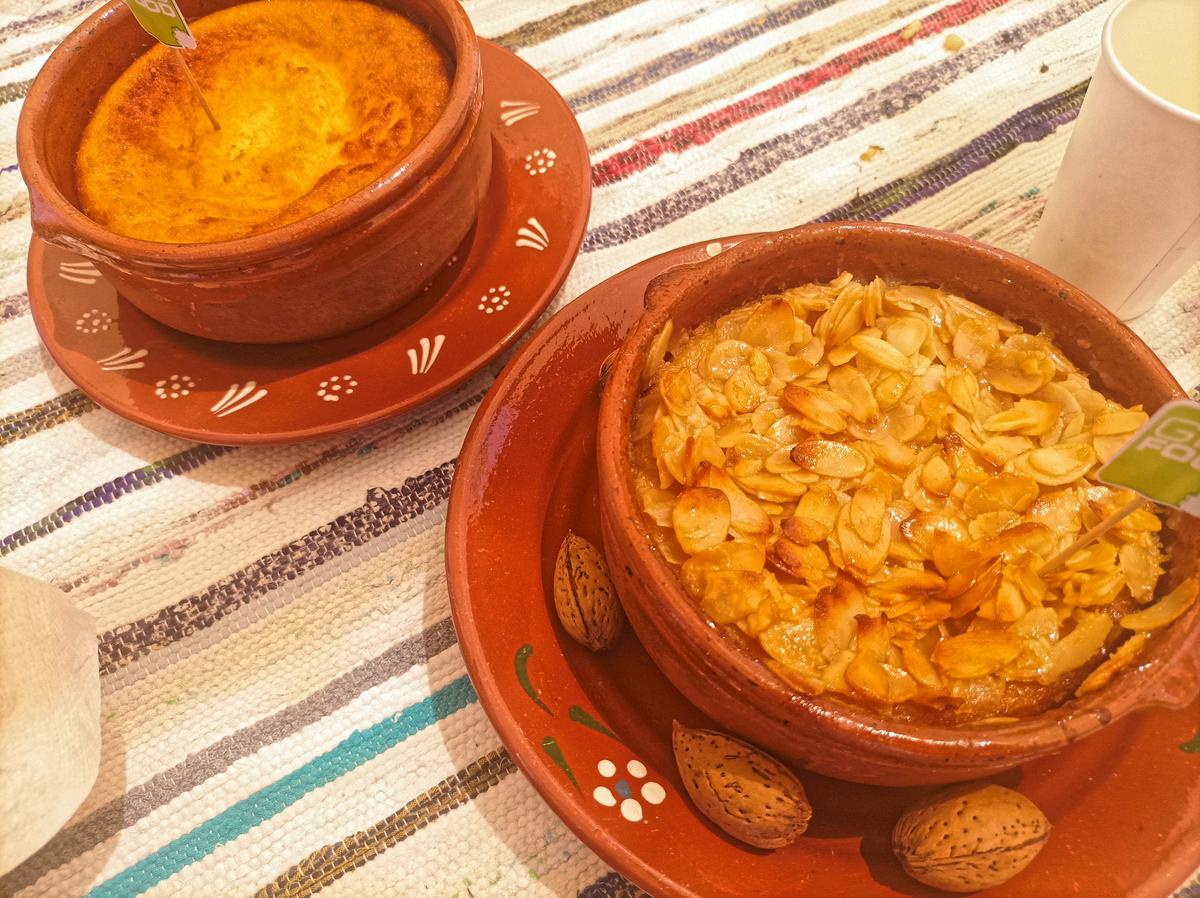
In the traditional dairy farm, fresh sheep's cheese, curd/’travia’ cheese and cured cheese are produced, with milk milked every day, as soon as the sun rises.
Since ancient times, meat, wool and sheep's milk have been essential pillars of the region's economy. The quality of the cheese depends not only on the skill of those who make it, but also on the quality of the pastures at Vale de Alfaia, where the animals feed, surrounded by centuries-old olive groves. The famous curd/’travia’ cheese, a delicacy from this region, is produced by coagulating the whey resulting from cheese production.
This dish was usually cooked at festive times. Now it's a delicacy!


INGREDIENTS:
1 litre Organic Curd Cheese
6 eggs
6 tablespoons of sugar
Orange zest
Almonds (optional)
INSTRUCTIONS:
1. Drain the curd so that it is neither too wet nor too dry.
2 Add the whole eggs
3. Add the sugar and orange zest and mix everything well.
4. Place in a bowl greased with a little olive oil (preferably a clay pot; if it is, after greasing it, heat the pot a little before pouring in the mixture). Keep an eye on the oven
5. (optional) If you want to add almonds, just put the almonds, a spoonful of butter and sugar in a pan, in this case I like to use brown sugar. Let it mix well, when you realize that the curd cheese is almost cooked, take it out, pour the almonds on top and put it back in the oven to toast the almonds.
6. Leave to cool and serve.
7. Enjoy!


Serra da Gardunha is the main mountain of Naturtejo UNESCO Global Geopark. In this idyllic setting, in granite terrains dating back over 310 million years (and very close to the transition with schist lands), Vale de Alfaia Farm is located.
Cheese, olive oil and legumes are produced here organically, based on sustainable practices.
Traditional beans are produced here, such as local varieties of cowpeas (‘cara verde’, ‘cara preta’ and ‘bago de arroz’), fully adapted to the topographical and climatic conditions, which grow without the need for extra watering The cowpea is important not only for its high nutritional value in the diet, but also because, as a dried bean, it is easily stored for a long time and its distribution does not need refrigeration. This bean also works as a green manure for soils due to its ability to fix nitrogen, avoiding the use of nitrogen fertilizers. This dish was usually cooked for farm workers.

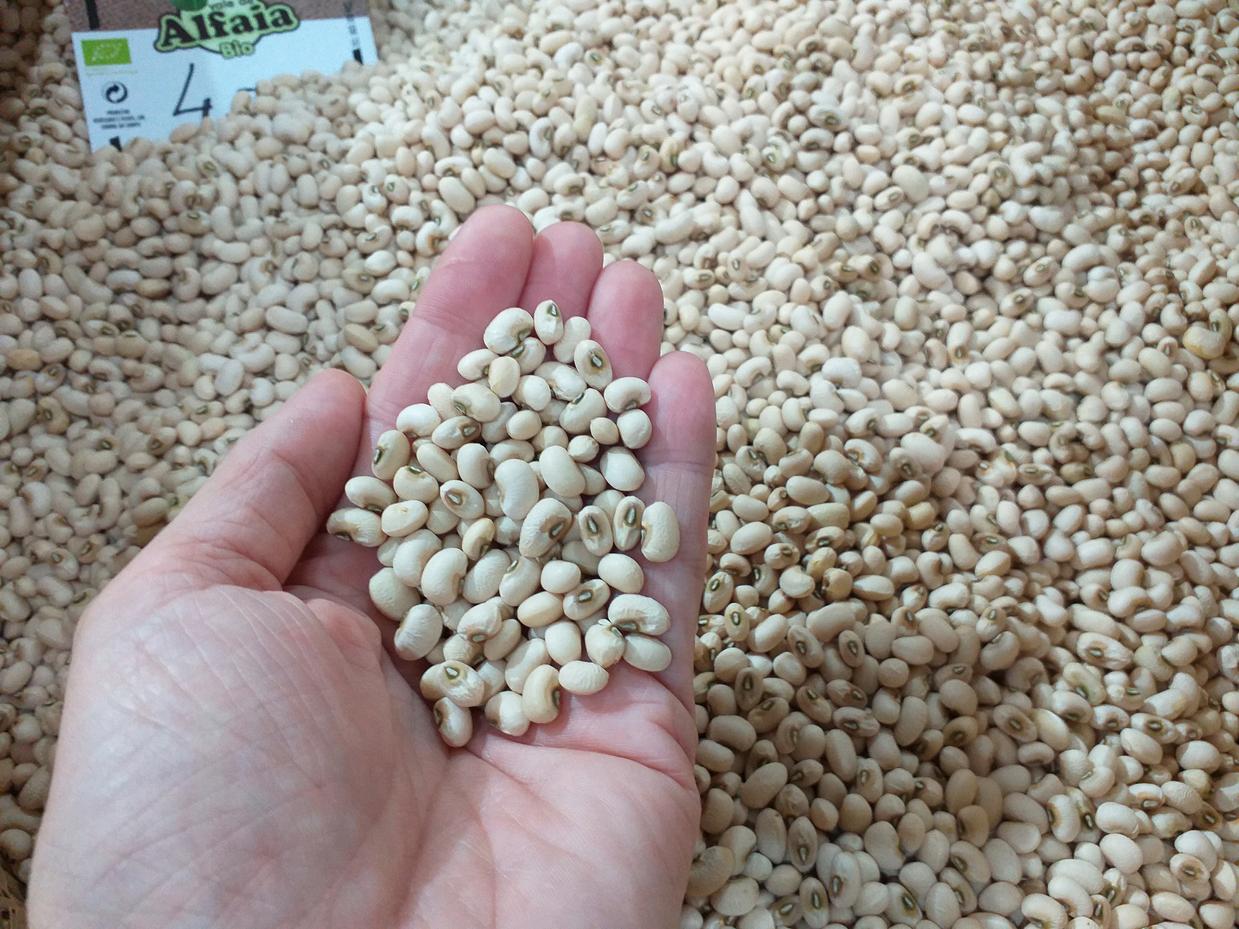
INGREDIENTS:
Olive oil
Garlic Bay leaves
Organic Cowpea
Green Cabbage
Corn Bread
INSTRUCTIONS:
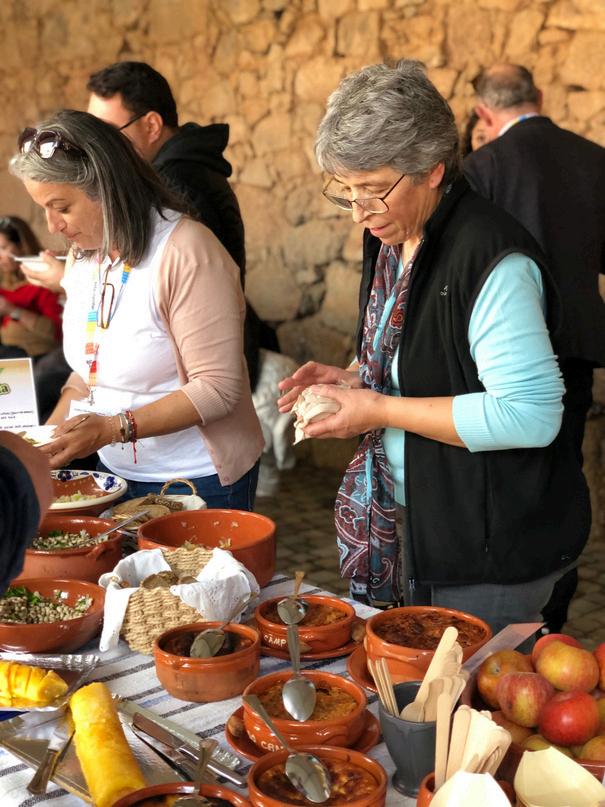
1. Put olive oil, garlic and bay leaves in a frying pan.
2 Let it heat up and add the crust of the bread to crisp it up
3. Add the previously cooked green cabbage, always adding olive oil to taste so that the Migas don't dry out.
4. Add a pinch of salt.
5. Add the previously cooked Cara Verde BIO cowpeas, and finally the breadcrumbs.
6. Wrap everything up very well, adding olive oil to taste.
7 Enjoy!

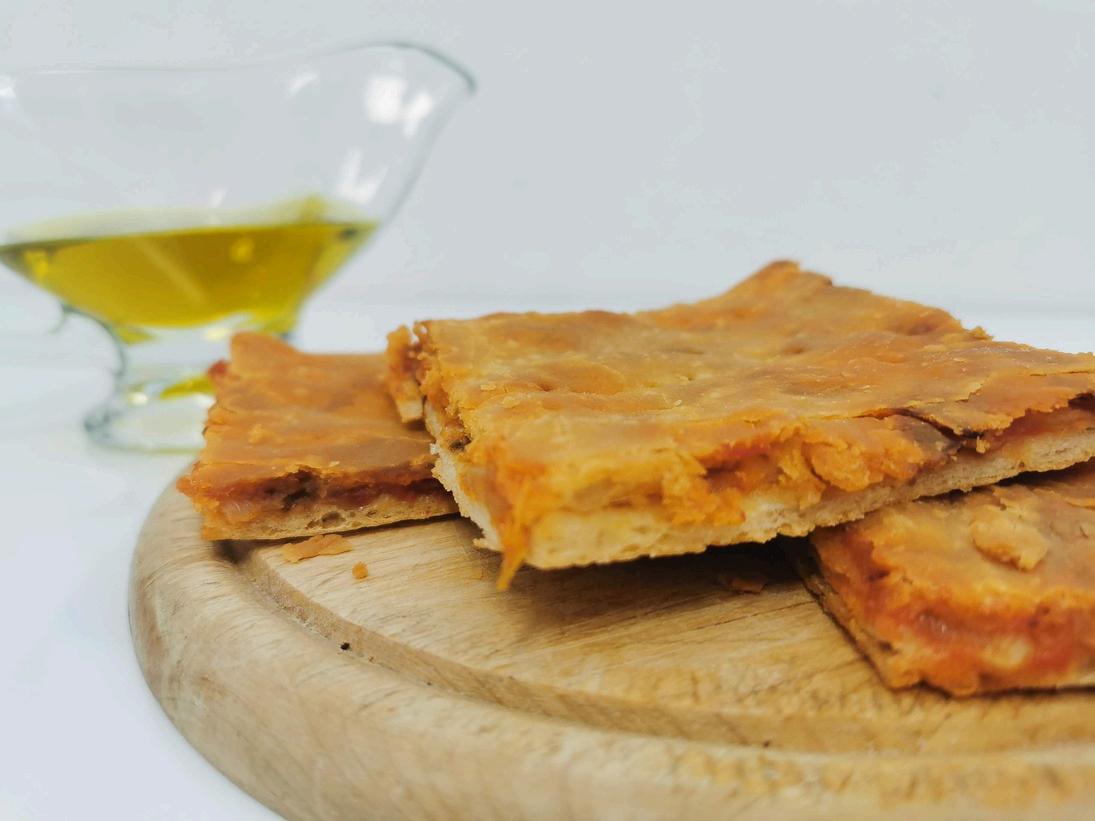
Salt-cured fish pie "Komiška pogača," is a traditional dish from the island of Vis, the largest and most populous island of the Vis Archipelago UNESCO Global Geopark. It reflects the islanders' way of life when fishing and agriculture were vital. Its origins trace back to the ancient Greeks, who founded the city of Issa on Vis Fishermen quickly adopted the pie due to its nutritious and long-lasting qualities, making it ideal for extended fishing trips
The original recipe features dough filled with salted fish and onions After the discovery of the Americas, tomatoes were added fresh in the summer from local gardens and dried in the winter The key ingredient is sardines, the most plentiful and affordable fish in the Adriatic Salting sardines allowed islanders to preserve them, especially during winter months when fishing was limited.
Today, "Komiška pogača" is a cherished part of Vis’s cultural identity. Passed down through generations, it is prepared for special occasions and represents the Mediterranean way of life, where humble ingredients combine to create dishes rich in flavor, blending salty sardines, sweet onions, ripe tomatoes, and aromatic olive oil.

1 kg (2 2 lbs) all-purpose flour
300-400 g (10-14 oz) red onions
10 salt-cured sardines
300-400 g (10-14 oz) tomatoes
1.5 packets of yeast
1 tablespoon of salt
2 tablespoons of oil
DOUGH: Mix the all-purpose flour, salt, oil, yeast, and warm water to form a dough. Let the dough rise until it doubles in size.
FILLING: Sauté sliced red onions in olive oil Add peeled tomatoes and cook for a few minutes to reduce their acidity. Season with salt and pepper.
INSTRUCTIONS:
1. Spread the filling over the dough.
Knead the risen dough and roll it out to cover the entire surface of a baking tray, about 0 5 cm (0 2 in) thick Grease the tray with oil beforehand.
2.
4.
Clean and fillet the salt-cured sardines, cutting them into smaller pieces, and place them on top of the filling. Roll out the second half of the dough and cover the filling.
3 Press the edges of the dough together with your hands and pierce the top with a fork several times to prevent the dough from puffing up while baking. Bake in the oven at 150°C (300°F) until golden brown.
“The salt-cured sardine pie is much more than just a pie – it tells a story of the modest life of islanders, their connection to the sea, and a tradition that has endured for centuries. Today, by preserving this tradition, the pie becomes a bridge between the past and the present, connecting locals with visitors who come to experience the authentic flavors of the Adriatic.”


Carob cookies are a popular treat on the island of Vis, the largest island in the Vis Archipelago UNESCO Global Geopark, where carob is a staple of traditional cuisine. Carob (Ceratonia siliqua) is a tree native to the Mediterranean region and has played a significant role in the agricultural history of Vis For centuries, it was an important food source, often referred to as the "oldest inhabitant of the Mediterranean".
Carob is used in many traditional recipes on Vis: its natural sweetness and unique flavor made it a common substitute for cocoa, and today carob flour is a popular ingredient in modern, healthy cooking.
Carob cookies are the perfect blend of traditional flavor and health benefits, with a mild, natural sweetness reminiscent of cocoa. These crispy and fragrant cookies, made from simple ingredients, are easy to prepare at home. Their nutritious qualities make them a great option for a light snack or dessert, offering a rich taste of carob.

INGREDIENTS:
3 eggs
450 g carob flour
300 g all-purpose flour
200 g brown sugar (use less for less sweet cookies)
1 packet of vanilla sugar
1 packet of baking powder
250 g lard
A splash of rum
Zest of one lemon or orange (optional)
INSTRUCTIONS:
Beat the eggs, sugar, and vanilla sugar in a bowl, then add the lard and lemon or orange zest. Mix well. Gradually add the carob flour, all-purpose flour, and baking powder. Knead the dough until smooth, then let it rest in plastic wrap for 2 hours. Divide the dough into smaller pieces and shape them with a knife or a cookie press. Bake for 20 minutes in an oven preheated to 150°C.
“Carob cookies are a simple yet flavorful and nutritious dessert, blending tradition and health. They evoke nostalgic memories of homemade cookies, now enriched with carob for a healthier, more original twist. Perfect for holiday tables or any special occasion.”
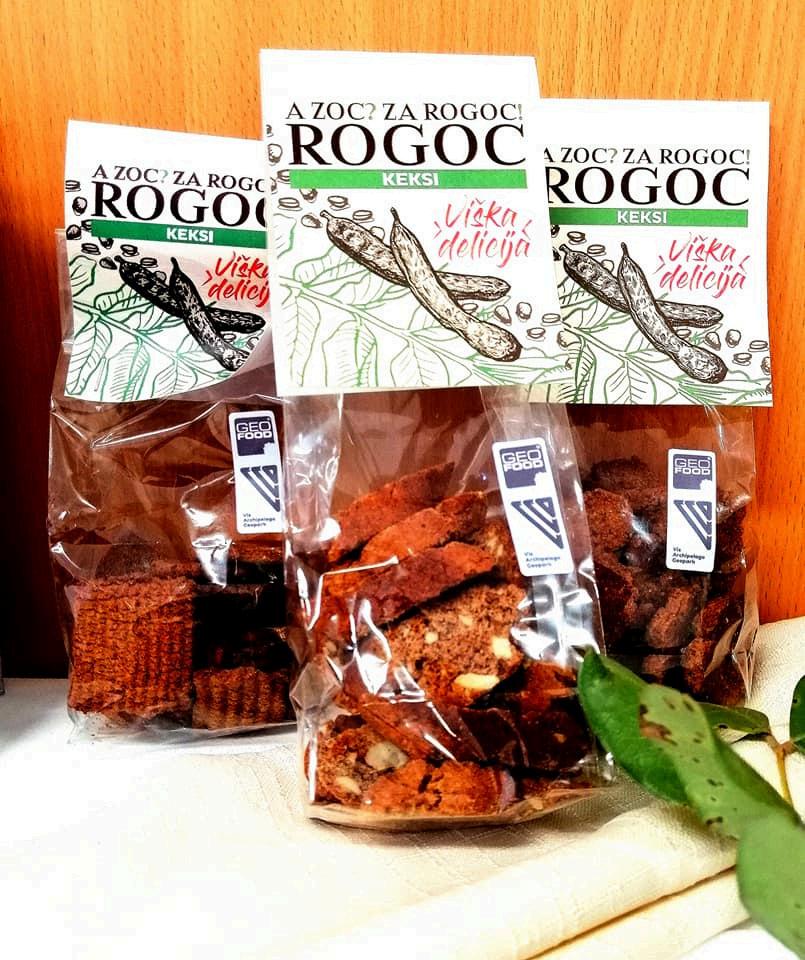


"Sopas da Segada" is an ancient dish whose origins, as the name suggests, are related to agricultural tradition - the cultivation of cereals. During the months of June and July, the mowing or harvesting of the cereal was recreated, mixing exhausting physical work, which began at sunrise to avoid the hottest hours, with an atmosphere of fraternization and singing.
Lunch, served in the field, consisted of the traditional ‘Sopas da Segada’. This is a dry soup in which bread, cod and olive oil are the main ingredients. The sliced wheat bread is laid out in alternating layers with the codfish, everything is drizzled with the codfish's cooking water, hot olive oil with paprika is poured over where the garlic has been fried and finally, the hard-boiled egg is placed on top of these soups.
The wheat and olive oil used are grown on land with particular orographic, geological and climatic characteristics. Both cereals and olive groves are on land at elevations below 800 meters, on acidic or slightly acidic soils, preferably clay soils, which give the soil good drainage and air circulation. The existing clay soils (schists) are the result of rocks that were once formed on the shores of an ancient continent under water, and which are now submerged by the forces of nature.

These ingredients are only for about 4 to 6 people, but these soups can be made for larger quantities by changing the doses of the ingredients.
INGREDIENTS:
8 dl of water
4 cloves of garlic
2 dl olive oil
1 teaspoon paprika
250 gr homemade sliced bread
Hard-boiled eggs
Salt to taste
240 gr cod
INSTRUCTIONS:
Boil the cod after soaking.
1. Cut the bread into thin slices in a bowl. 2. Dip them in the boiling codfish cooking water. 3. Place the shredded cod on top of the sliced bread. Heat the olive oil with the paprika and fry the garlic cloves 4.
Drizzle the soup with the boiling oil. 5.
“This dish is more than a meal; it's a story of our land, reflecting the harmony between nature and tradition. Each ingredient tells a story of local culture, history and the natural beauty that defines our region.”
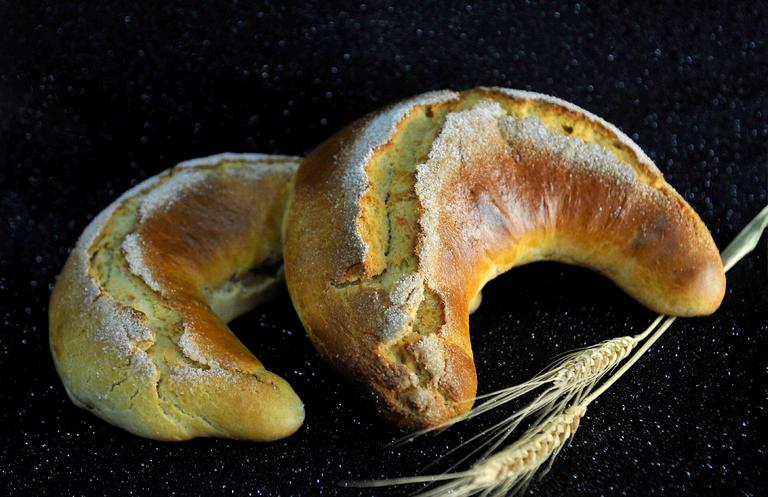
This is a typical sweet from the municipality of Macedo de Cavaleiros, which has gained fame and conquered the sweetest palates.
Calço, a sweet whose origins are lost in time, with a generally horseshoe-shaped appearance, has been an inseparable companion of Easter since time immemorial, and quickly conquered the other times of the year, sweetening the days of the people of the municipality, an obligatory presence on their tables, becoming an inescapable icon of Macedo's gastronomy.
The wheat produced in the Terras de Cavaleiros UNESCO Global Geopark, in a territory where fertile land is not abundant, is grown on ‘schist’ rocks that in the past were formed at the bottom of the sea and which, due to the action of the forces of nature, are now on the surface This wheat, from which the flour used in our gastronomy is made, has the advantage of resisting climate change and drought, and its root system allows it to take nutrients from the earth at depth, through the fissures in the rock.
Our olive oil is grown in traditional olive groves where the traditions and heritage of our ancestors are preserved The excellence of the olives is reflected in the quality of the oil This quality is due to the climate and the soil The olive groves have deep, acidic to slightly alkaline soils due to the existing geological substrate (rocks). The rocks in this Geopark are evidence of ancient continents and an ocean before the formation of the last supercontinent, Pangea.


INGREDIENTS FOR 6 LARGE OR 12 SMALL CAKES:
2kg flour
1 bar baker's yeast
12 eggs
2.5 dl olive oil
0 5kg sugar
Orange juice
1 glass of brandy
Cinnamon powder
2dl milk or water (optional)
100 g butter (optional)
INSTRUCTIONS;
Prepare the yeast the day before (dissolve the yeast bar in water with a pinch of salt) and leave to stand until the following day. Put the flour in a bowl and make a small hole in the centre, then add the eggs previously mixed (but not beaten) with the sugar Then add the milk, the olive oil and the butter (melted but already cold). Continue kneading and add the cinnamon. When the dough is almost ready, sprinkle with the brandy and continue kneading. Leave to rise for 2-3 hours and then cut the dough into horseshoe-shaped portions, brush the wedges with egg yolk, sprinkle with sugar and bake.
‘”This typical sweet is much more than a traditional sweet; it is a story of our land, reflecting the harmony between nature and tradition. Each ingredient tells a story of the local culture, history and natural beauty that defines our region.”

The Pacific oyster Magallana Gigas originates from the Pacific Ocean off Japan and Southeast Asia. It was introduced to large parts of the world for breeding and aquaculture. Later it has spread in nature directly and via ballast water in ships and sitting on ship hulls. It was found for the first time in Denmark in 1996 - since then it has become common finding it in the Limfjord in Geopark Vestjylland
The authorities in Denmark see the Pacific oyster as an unwanted and invasive species. This is because it can form reefs, which means that it outcompetes native species such as the European oyster and blue mussels.
To a great extent it then changes the animal and plant communities on the seabed Therefore, we eat it with great pleasure raw with just a hint of lemon or cooked in exciting different ways.
Our geopark’s exciting landscape with Damien lime tells stories reaching millions of years back in time. It connects one pit of today to the growing number of water bats and to Thiese Dairy’s use of the pit as a storage for the cheese used in this recipe Just like the crème fraiche, it is a salute to the Danish dairy production.


INGREDIENTS:
6 Pacific Oysters
1 1/2 dl creme fraiche 18%
25 grams of grated Vesterhavs cheese
1 dl bread crumps
1 spring onion in very thin slices
1 teaspoon finely grated lemon peel
1 teaspoon freshly grated black pepper
5 stalks fresh parsley – chopped fine
Lemon – with a ¼ for each to squeeze on top of their two oysters
INSTRUCTIONS:
1.The oysters are opened. Use a special knife and learn to do it from an expert. Any small pieces of the shell and the liquid is rinsed of with clean water. The oyster is put back in the hollowest shell. Arrange all the oysters in an ovenproof dish. The oysters are collected from the waters in the Limfjord from where also our ancestors back to the stone age collected oysters. We just collect the invasive breed for this recipe.
2 Preparing the topping: In a bowl the crème fraiche, the cheese, bread crumps, onion slices, lemon peel and pepper is stirred together to a thick paste Onions have been a staple of our cuisine for centuries and are locally produced at farms in the geopark emphasizing our commitment to locally sourced products Denmark has for years been known for its dairy products, the Vesterhavs Cheese is made from the milk of cows grazing the verdant fields in and around Bovbjerg - the geopark’s main site. The cheese is well known with a delicate nutty taste. In combination with the crème fraiche, it provides the tasty background for the oyster embodying the essences of the dairy expertise and the fishing knowledge of our region.
3. Ready for the oven: Set the oven on 250 degrees. Add the topping, covering each of the oysters Then it is in the oven with the dish - full of the delicate oysters Leave them in the oven for about 5 minutes till the topping is light brown and bubbly
4 Finishing touches: Arrange with chopped parsley and a quarter of a lemon for each person to squeeze over according to taste Garnish generously with the chopped parsley, which is commonly grown in gardens, symbolizing our community's love for fresh herbs and their taste.
5. Serving: Serve at special occasions like New Year or on an ordinary Wednesday. Each time you will enjoy treasures from our land’s geological treasures.


Lietvesi pike snack is sustainably and locally produced. The use of domestic fish in cooking provides employment for local fishermen, and the carbon footprint of this fish is small. The richness of Saimaa is the food made from clean raw materials from the local area, which is also the basis for this product.
One of the most important fish species caught in Saimaa Geopark is pike. There is also a lot of history associated with pike. In Finnish mythology, the pike was often associated with death, although it was a prized food fish and a giant fish in stories. In myths, the pike is associated with the origin of both fire and the musical instrument. The pike was also valued as a food, as it remained edible for a long time and was easy to dry
This recipe combines the rich history of Saimaa Geopark, sustainable values and local ingredients. Saimaa Geopark is known for its stunning landscapes and diverse nature and has a long tradition of sustainable living.
This recipe not only offers a delicious taste experience, but also respects the environment and supports local producers.

INGREDIENTS:
Spruce Sprouts Mayonnaise:
2 egg yolks of local eggs
1 tbs mustard
1 tsp red wine vinegar
2 dl vegetable oil + 2 dl spruce sprouts (or other wild herbs) oil (mix 1 dl herbs and 1 2/3 dl oil in blender warming up the oil 60°C strengthens the extracting of tastes from herbs)
Salt and black pepper
200 g cold smoked Pike (trout/salmon) in thin slices
30 g slightly fried shallots or yellow onion
100 g pickled Chantarelles or other pickled Mushrooms or Vegetables (onions, red onions, beet roots, parsnips, carrots, celery, etc.)
INSTRUCTIONS:
2
Slowly add the mixed oil to the other ingredients. Add salt and pepper and leave the mayonnaise in the fridge for at least half an hour. Check the taste! You can also use 3-3,5 dl of excellent organic mayonnaise. (just blend the herbs into the mayonnaise with a blender).
1. Cut 150g of pike into small cubes and mix them with the cooled onions and mayonnaise.
3. Cook the bread slices in butter until nice brown and crispy.
5
Cut 4 slices of local barley or rye bread (for the fine dining version, cut off the edges, but make sure they are firm).
4. Spoon the mayonnaise mixture over the bread and garnish with slices of pike perch, pickled chanterelles and dill.
Try to assemble the dish nicely so that it rises from the bread in a nice and fresh way.
A slice of lemon or lime is optional, but not necessary.

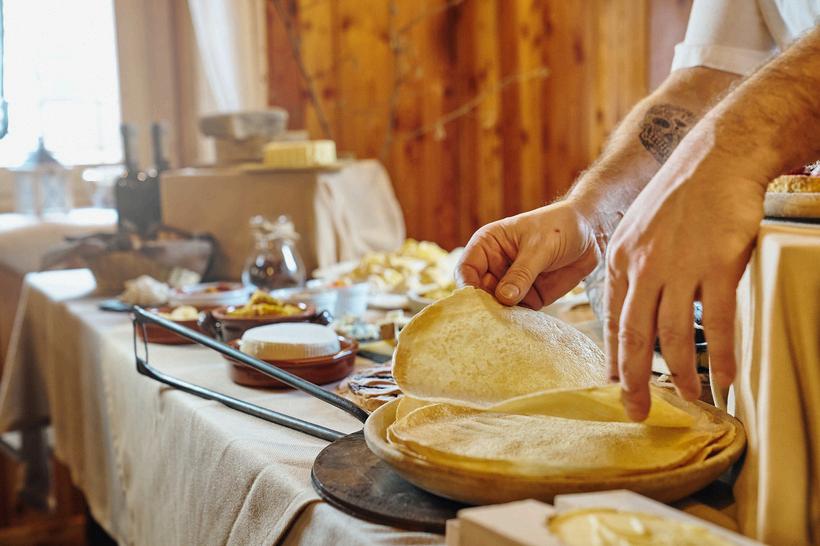
Pic:@ChiaraGuglielmina
In the Sesia Valley the miacce (or miacci) are a food product whose documented origins date back to the sixteenth century. Over time the recipe has varied, and numerous versions are born passed on orally; main variations include the use of eggs and corn flour. Due to their centennial history, miacce are a symbol of the Sesia Valley. They are still consumed within the families and, in addition, they are offered during traditional village and valley festivals, attended by tourists too.
Local researchers suggest that miacce could be taken as a gastronomic symbol of the Sesia Valley for their constant and continuous proposal and due to their commercial affirmation

INGREDIENTS:
• 300g flour
• 1l whole milk
• 100g fresh cooking cream
• Pinch of salt
• Filling to taste
Serves 6 people
ISTRUCTIONS:
Pour the flour into a bowl and gradually add milk while stirring to avoid lumps, then add fresh cream and a pinch of salt. Stir until you obtain a quite thick but still liquid mixture.
2. Cooking:
Pre-heat the traditional iron plates (or alternatively a crepes iron pan) and grease them with lard, then pour a ladle of the mixture onto one of the two hot plates while holding the iron on fire. Close the iron plates and cook the miacce on both sides.
3. Tasting:
Once ready, you can eat them as a substitute of bread or fill them to taste. If you want to stick to traditional ingredients, you could eat your miaccia with fuse local butter and salt or filled with toma (a typical cheese), traditional cold cuts (like mocetta or locally produced salami) or both.

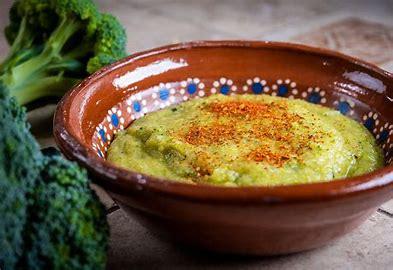
Frascatula is a traditional dish from the rural province of Enna, in Sicily. It is a type of polenta made with semolina flour from the Perciasacchi variety of durum wheat, an ancient Sicilian grain named for its pointed shape, which could pierce through fabric sacks. This ancient durum wheat is low in gluten and is also known as Demeter’s wheat, according to myth.
The polenta is enriched with seasonal vegetables such as wild fennel, typical of rocky and hilly areas of the Geopark, and sometimes with meat or sausage. This dish perfectly combines the simplicity of the ingredients, the richness of typical Sicilian flavors, and the importance of seasonality in traditional Sicilian cuisine.
Often prepared during communal gatherings, this dish represented a moment of unity and sharing among farming families. Today, Frascatula is a symbol of rustic and genuine cuisine from inland Sicily, telling the story and traditions of a land deeply connected to its agricultural heritage through its flavors.

INGREDIENTS:
• 400 g of semolina flour from Perciasacchi durum wheat
• 2 litres of water
• 1 kg of mixed vegetables (chard, broccoli, wild fennel)
• 200 g of Nebrodi black pork bacon or sausage (optional)
• 2 garlic cloves
• Chili pepper (optional)
• Extra virgin olive oil
• Salt to taste
INSTRUCTIONS:
Preparing the vegetables:
1
Thoroughly wash the chard and broccoli, and cut them into pieces Add the wild fennel, removing the central stems.
In a large pot, heat some extra virgin olive oil and add the garlic, letting it lightly brown.
3.
2. If desired, add the bacon or sausage, cut into pieces, and sauté until golden brown
4
Add the vegetables and let them cook on low heat, stirring occasionally, until they become tender. Season with salt, and if you like, add a bit of chili pepper.
Preparing the Frascatula:
1
2
In another pot, bring 2 litres of salted water to a boil
When the water boils, slowly pour in the semolina flour, stirring constantly with a whisk to prevent lumps from forming.
4.
3. Once ready, combine the frascatula with the vegetables in the pot, mixing well to blend all the ingredients together
Continue stirring until the polenta starts to come away from the sides of the pot and reaches a creamy consistency. Cooking time is about 30-40 minutes.
Serving:
1.
Frascatula Ennese can be served hot, drizzled with a little raw local extra virgin olive oil. It can be accompanied by rustic bread, typical of the traditional peasant cuisine.

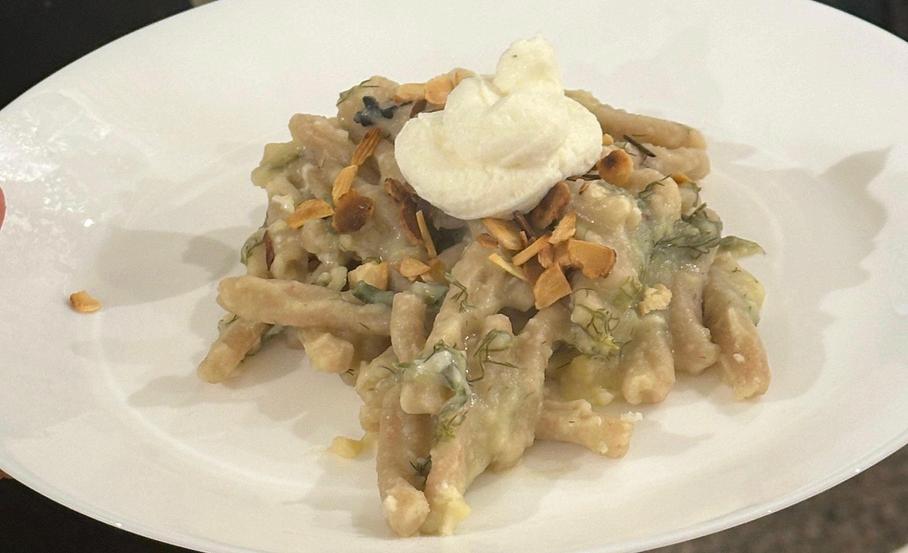
Fava bean macco with wild fennel has deep roots in the culinary traditions of Enna, a region in the heart of Sicily rich in history and culture This humble yet nourishing and flavorful dish reflects the ancient wisdom of farmers and their deep connection to the land. In the rural areas of Enna, fava beans were a staple, as they thrived even in the poorest and driest soils. Macco di fava, traditionally prepared in the spring, symbolized the end of winter and the abundance of the new agricultural season Dried fava beans, used for the macco, were often harvested and stored for the winter months, becoming a valuable resource for farming families
Beyond its nutritional value, this dish represented a moment of sharing and togetherness. It was often prepared in large quantities for holidays and local religious celebrations.
In summary, caserecce with fava bean macco and wild fennel is deeply rooted in Enna’s agricultural and rural culture, showcasing the skillful use of local ingredients and a cuisine that, in its simplicity, carries centuries of history, tradition, and values tied to the land.

• 320 g of durum wheat caserecce pasta from the Timilia or Tumminia variety
• 300 g of peeled dried fava beans from Leonforte
• 1 bunch of wild fennel
• 1 garlic clove
• Extra virgin olive oil
• Chili pepper (optional)
• Salt to taste
• Grated pecorino cheese
• Toasted almonds to taste
INSTRUCTIONS:
1. Soaking the fava beans:
If using peeled dried fava beans from Leonforte, soak them in cold water for at least 6-8 hours (preferably overnight) If using fresh fava beans, you can skip this step
2 Cooking the fava beans:
After soaking, drain and rinse the beans under running water Place the beans in a large pot, cover them with cold water, and bring to a boil Simmer on low heat for about 40-50 minutes, until tender.
3. Blending:
•Once the beans are fully cooked, drain them, but reserve some cooking water. Blend the fava beans with an immersion blender until you achieve a thick, velvety cream, adding some cooking water and salt if needed to adjust the consistency.
4. Preparing the wild fennel:
Meanwhile, wash the wild fennel and blanch it in salted water for about 5 minutes. Drain and roughly chop it.
If you like, you can save some of the fennel’s cooking water to boil the pasta for extra flavor
In a large pan, heat a drizzle of extra virgin olive oil and add the garlic (whole or chopped, as preferred) and a pinch of chili pepper, if desired
After a few minutes, add the chopped wild fennel and let it sauté for a few minutes Then, stir in the grated pecorino cheese and the fava bean cream, mixing until smooth
5 Cooking the pasta:
Bring a pot of salted water (or the fennel cooking water) to a boil and cook the caserecce pasta
6. Combining all ingredients:
Add the fava bean cream (macco) to the pan with the fennel and mix well. If the cream is too thick, you can thin it with some of the pasta cooking water. Drain the pasta al dente and transfer it to the pan with the fava bean and fennel macco. Toss everything together for a minute, mixing thoroughly.
7. Serving:
Serve the pasta hot, drizzled with a bit of raw extra virgin olive oil and, if desired, topped with toasted almonds and a dollop of sheep ricotta
‘’Alcatra’’ – Stories of the Atlantic, from Azores Geopark in Portugal
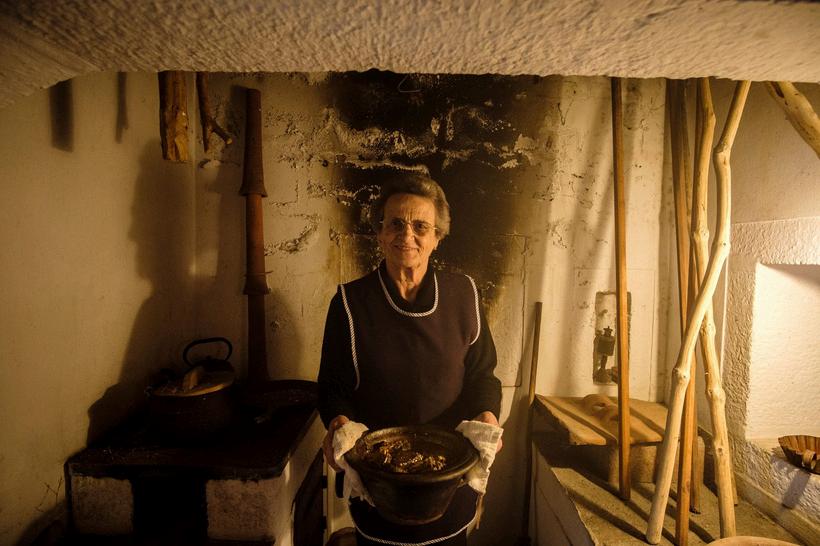
Although ‘’alcatra’’ is known as a cut of beef, in Azores UNESCO Global Geopark this word is synonymous of festivity, sharing and wonderful food. The confection is simple but it requires some specific elements, like the pot, the wood oven, time and patience, as it takes around three days for perfection. The recipe is an adaptation of the ‘’Chanfana’’ that came with the first settlers in the 15th century from the North of Portugal, and was adapted with the available resources in poor houses, using the less noble parts of the beef (tougher and with bones) and the spices that kept arriving to Terceira island in the ships from India. It appears in every family’s table during religious festivities, most of them connected with volcanic eruptions or seismic crises, that celebrate life through sharing.
The volcanic soils of the Azores UNESCO Global Geopark and the proximity to the sea are also vital for the salinity of the Verdelho wine and the quality of the meat. ‘’Alcatra’’ is one of the symbols of the islands and is in the list of Intangible Cultural Heritage of the Azores.

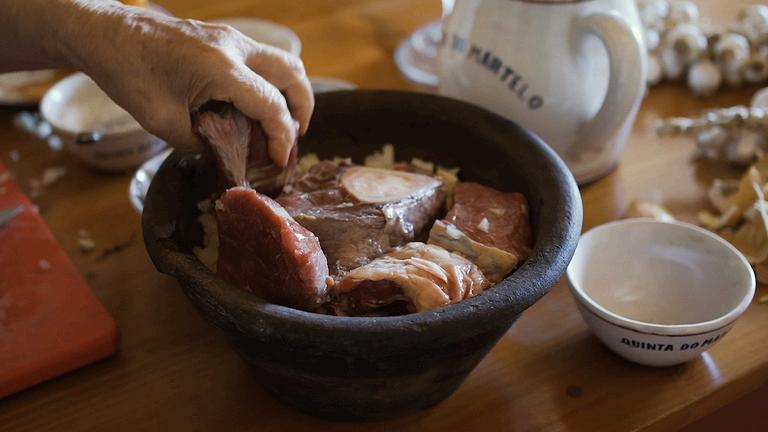
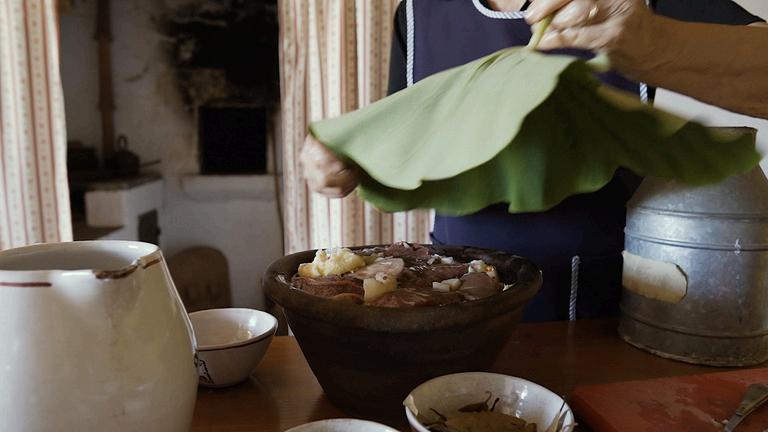


INGREDIENTS:
Beef, round, shank and chuck (preferably with bones)
1 medium onion
1 garlic head
½ a cup of smoked bacon
125 gr of butter
2 cups of white wine (recommended is the Verdelho dos Biscoitos- GEOfood product)
1 tsp of allspice grain (or laurel depending on the village where is prepared)
1 tsp of black peppercorns
salt (at taste)
unglazed red clay cooking pot, seasoned (alguidar)
a big cabbage leaf or tin paper sheet
INSTRUCTIONS:
This traditional dish is prepared in a different way in each family house, so we choose to present to you the recipe of Gilberto’s mother, that you can taste at ‘’Quinta do Martelo’’, a partner of Azores UNESCO Global Geopark. Consider that you need to start preparing the dish three days in advance.
Day 1:
Grease the meat and the pot with the butter Remove the peels from the garlic head leaving the cloves together and place it in the base of the pot. On top of it place the shank and then alternate in layers, the finely chopped onion, the spices, the smoked bacon and the other pieces of meat Make sure you finish with some smoked bacon and some knobs of butter. Pour the wine on top roughly covering it all, use a knife to lift the meat making sure there are no air pockets Leave overnight
Day 2:
Start preparing your wooden oven heating it up. Place the hot coals around the walls of the oven. Place your pot covered with a cabbage leaf (tin foil works just fine – just make sure you poke some vents in it) in the centre and then more hot coals at the entrance of the oven before closing it
It should be left to cook at least for 7-8 hours During cooking, check to see if there is still liquid, if not add some water You can also turn the meat around for even cooking In the last half hour, uncover the clay pot, and let the top turn brown Remove from the oven and let it rest for one more night
Day 3:
Invite your family and friends, heat up your ‘’Alcatra’’ in the oven and enjoy the tenderness of this dish that tell us stories about the Atlantic. It is normally eaten only with sweet bread or yam but you can enjoy it with some sweet or white boiled potatoes Pair it with a bottle of Magma wine for a full experience on the volcanic identity of the Azores UNESCO Global Geopark
Notes/Tips:
The amount of meat depends on the size of the pot
You can try and use a roaster (be conscious it will not be the same flavor)
. if you use a new pot (unglazed always), it will need to be seasoned. To do so, soak it in water for 2 or 3 days. Then boil it with onion, local potato peals and cabbage in order to remove the earthy taste of clay. Then grease it with bacon skin. It will only be perfect when you use it several times
‘’The
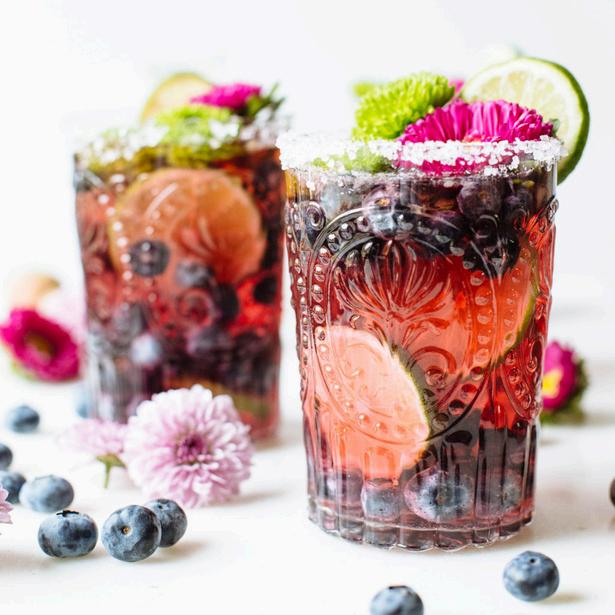
Pic: https://www calgiant com/recipes/blueberry-ros%C3%A9-tequila-punch/
The rose punch tradition in Thuringia is a delightful part of the region’s cultural heritage, particularly associated with festive occasions. This punch is typically made from a blend of fruit juices, spices, and sometimes alcohol, creating a warm, aromatic drink enjoyed during celebrations, especially in winter
In Thuringia, punch is often served at Christmas markets and local festivals, where it complements the festive atmosphere. The tradition emphasizes community and togetherness, as people gather to enjoy this warming beverage while celebrating local customs and seasonal festivities.


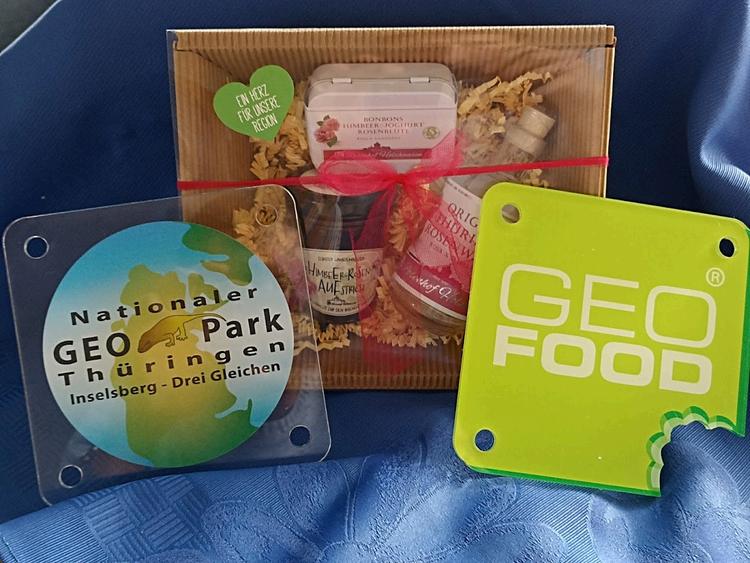
INGREDIENTS:
Bottle 0.7 l dry white wine
1 bottle 0.7 l white wine spritzer
1 bottle 0.2 l rose syrup
1 bottle 0 7 l semi-dry sparkling wine
250 g fresh blueberries
A handful of untreated rose petals from GEOfood Rosenwasser aus Thüringen
certified product
INSTRUCTIONS:
Enjoy well chilled - cheers

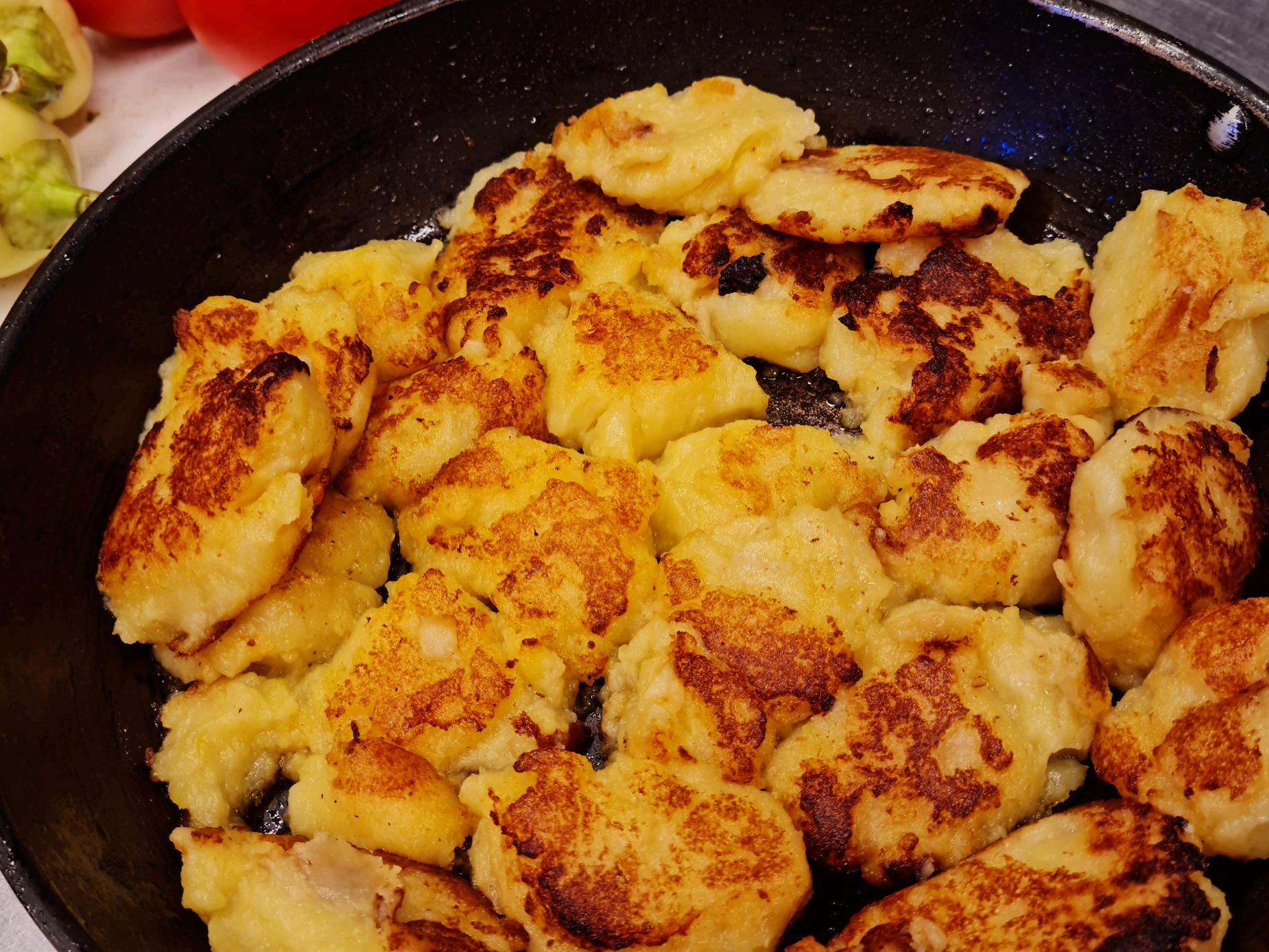
Ganca, also known as Dödölle, is a beloved traditional dish from Hungary, steeped in history and simplicity. These hearty potato dumplings have been a staple in Hungarian cuisine, particularly among peasant communities, for generations.
Traditionally, the dumplings are fried in lard with onions until they turn golden brown, creating a crispy exterior while remaining soft inside. They can be served as a main dish or a side dish, often topped with sour cream or crispy bacon bits for added flavor.
Ganca is more than just food; it represents the resourcefulness of Hungarian cuisine It’s often associated with family gatherings and celebrations, evoking nostalgia for simpler times. The dish is also featured in popular culture, including children’s songs, highlighting its place in Hungarian heritage. Today, while the classic recipe remains popular, you might find modern twists that incorporate different spices or serve it alongside various meats.
Regardless of the variation, Ganca continues to be a comforting reminder of home for many
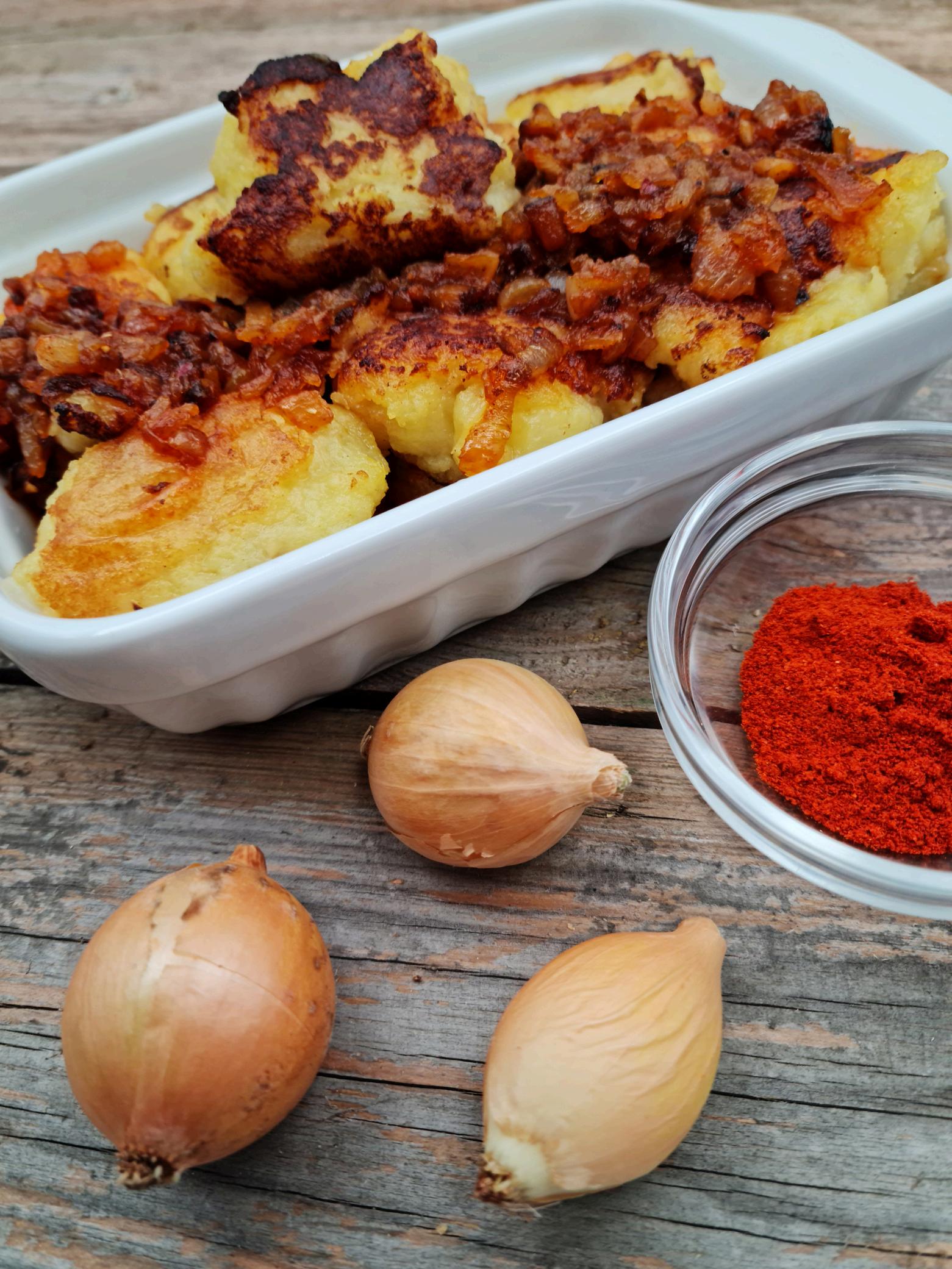

500g of potatoes
Salt to taste
Plain flour
Cooking fat
300g of onions
1. Cut the potatoes into cubes and cook them in just enough salted water to cover them
Once they are soft, mash them while still in the water. Leave the pot on the stove and thicken the mixture with flour.
Potatoes have not only been a versatile ingredient in the local Palóc cuisine but also one of the most essential Traditionally a poorer region of Hungary, the Palóc had to create dishes that were both delicious and nutritious, despite limited resources. Thanks to their versatility, potatoes were used in various forms for both sweet and savoury dishes.
2 Sauté the onions in the cooking fat and pour the mixture into a tray In Hungarian cuisine, different animal fats, such as pork or duck fat, were and still are commonly used. However, one unique feature of Palóc cooking is that they often used butter instead of fat, which was less common in village kitchens. Feel free to experiment with either fat or butter here.
3 Dip a spoon into the onion-fat mixture and use it to cut large pieces of dough into the tray. Don’t worry if the dumplings are not perfectly uniform in size. This rustic imperfection adds to the dish’s authentic, playful charm.
4. Once all the dough is added, pour the remaining onion-fat mixture over the top Ensure the dumplings are thoroughly coated to allow them to absorb all the rich flavors.
5. Bake in the oven for 30 minutes at 200°C, and serve directly from the tray. Gather around and enjoy the meal together, just as Palóc families did two hundred yeears ago
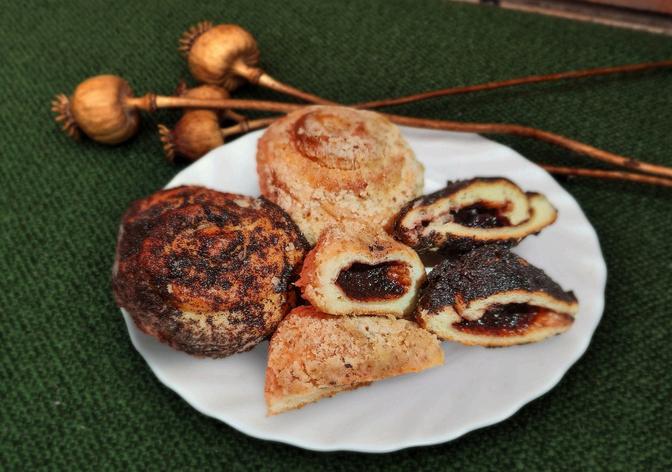
The Palóc Frentő is a traditional Hungarian dish, particularly associated with the Palóc region. It’s a type of potato dumpling that reflects the rustic and hearty nature of Hungarian cuisine. Here’s a brief story about it:
The Legend of Palóc Frentő
Once upon a time in the lush hills of the Palóc region, a humble farmer named János struggled to feed his family. One day, while tending to his potato field, he discovered a magical recipe hidden in an old cookbook passed down through generations This recipe promised to transform simple ingredients into a dish that could bring joy and warmth to any table. Excited, János gathered his potatoes, flour, and a few spices. He mixed them with care, forming soft dumplings that he boiled to perfection. As he served the Palóc Frentő to his family, the aroma filled their home, and smiles spread across their faces The dish was not just a meal; it was a celebration of their heritage and the love that bound them together. Word of János’s delicious dumplings spread throughout the village, and soon, everyone wanted to learn the secret of the Palóc Frentő. It became a staple at local gatherings, symbolizing community and togetherness Families would gather to share stories and laughter over bowls of these hearty dumplings, each adding their own twist to the recipe Today, the Palóc Frentő remains a cherished dish in Hungarian culture, reminding everyone of the simple joys of homecooked meals and the magic that can be found in everyday ingredients.


Ingredients:
1kg plain flour
Pinch of salt
Granulated sugar
300g yeast
300ml vegetable oil
1 liter milk
3 eggs
INSTRUCTIONS
1. Dissolve the yeast in lukewarm milk and let it activate.
For the dipping:
300g poppy seeds or walnuts
500ml milk
3 packets of vanilla sugar
500g icing sugar
2. In a large bowl, mix the flour, salt, sugar, eggs, oil, and the activated yeast-milk mixture. Knead the dough until it is elastic and smooth.
Various sweet and savoury breads were a crucial part of Palóc cuisine. Bread was so popular that it was not just a side dish but an integral part of many meals. It is not surprising, therefore, that yeast dough is used for this dish. Be mindful, however – the dough for frentő should be thicker than most sweet yeast doughs, such as those for babka or cinnamon rolls.
3. Set the bowl in a warm place for the dough to rise. Before, people used the warmth of the furnace bench – today, a radiator serves the same function.
4. While the dough is rising, grind the poppy seeds or walnuts if necessary. Both poppy seeds and walnuts have long been popular ingredients in Hungarian cuisine. It was common for village households to have at least one large walnut tree in the garden, which provided enough walnuts for both festive dishes like frentő and everyday meals like noodles with sugared walnuts
5 Once the dough has risen, it is time to shape the frentő Divide the dough into smaller pieces Roll each piece into a small stick shape, then make small cuts along one side of the sticks Roll them up like a cinnamon roll, ensuring the cut side faces outward
The result should resemble beautifully blooming roses
6 Place the rolls on a greased baking tray Bake in a preheated oven at 200°C until golden Traditionally made in a furnace, the dough is meant to thicken Don’t be surprised if your frentő doesn’t seem very soft at first; the final step will change it
7 When the rolls are baked, prepare the dipping mixture Mix 500ml of milk with the vanilla sugar Dip the rolls into this mixture, then coat in the poppy seeds or walnuts
8 Serve with a sprinkle of icing sugar on top Enjoy them while they are still warm For an authentic Palóc experience, make this dish for Easter and share it with guests and family

